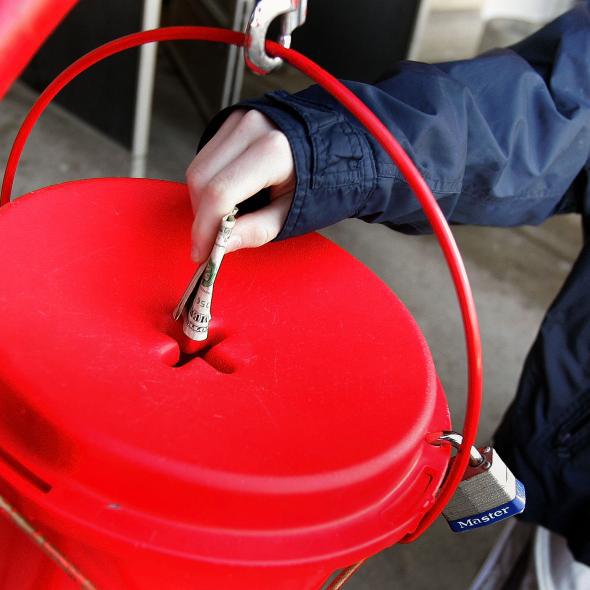Last year, Slate’s Jordan Weissmann observed that the rise of e-payments might be changing the way we tip. At coffee shops where we once might have tossed our change into a jar, services like Square now prompt us to pay much more. This has been a boon for baristas and others who depend on gratuities, since they otherwise might not receive anything from the swipe of a credit card. Now street-level charities like the Salvation Army are getting in on the action, testing the waters of our digital generosity.
This experiment comes via DipJar, a New York–based company that makes small canisterlike credit card receptacles. When you slide a card into one of them, it automatically charges a set amount—typically a dollar, though merchants can set it to other quantities—to the attached account. The machines produce a satisfying dinging sound as the payment goes through, clearly indicating to all involved that a virtuous act has been performed.
Now, as BostInno’s Dylan Martin reports, DipJar has branded some of its units in the style of Salvation Army’s red kettles to complement the charity’s annual fundraising campaign.* Dipjar is distributing the units to retail stores and other locations throughout Colorado and Southern California. As Martin explains, because the devices have their “own payment processing service,” they “can help retail stores raise money for The Salvation Army without having to take money that goes through their bookkeeping.”
It’s not entirely clear how the units will be set up: Since they don’t ordinarily give the consumer (or the donor, in this case) an option of how much they’re willing to pay, they’ll likely be set to the baseline $1, a figure that may seem more reasonable to someone who’s just paid five times that much for a latte than one who’s impulsively giving to a charity. It’s also not immediately clear how large a cut DipJar will be taking for its participation, if any, though the smart money says the company is doing this for the exposure.
This isn’t the Salvation Army’s first attempt to accommodate to the realities of modern commerce. Its online red kettle program, for example, allows organizations to raise funds through virtual channels. But the $4 million it hopes to raise through that initiative pales in comparison to, say, the $135.9 million it raised through all its outlets in 2013. The charity’s real-world bell ringers still play a central role in its fundraising efforts, generally outweighing its Internet fundraising. Its project with DipJar, however, occupies an emerging space between the virtual and the real, one that will likely be important for the Salvation Army as its altruistic troops soldier ahead.
*Correction, Nov. 24, 2015: This post originally misidentified BostInno staff writer Dylan Martin as Dylan Matt.
